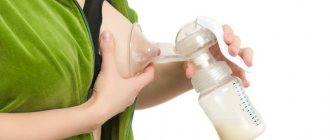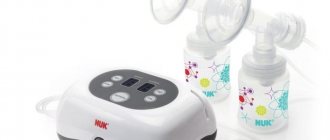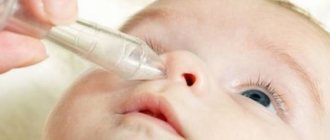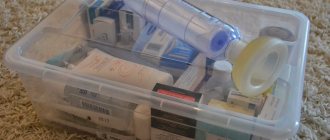Breastfeeding is a natural process that is a distinctive feature of all living creatures belonging to the class of mammals. In humans, it has a number of its own characteristics related to lifestyle.
Human life, for the most part, is regulated not by biological, but by social factors, and therefore we are forced in one way or another to regulate all the natural processes that happen to us.
Sometimes a person completely abandons any of his biological functions for various reasons, and breastfeeding is no exception. Its popularity in different regions of the world and social strata depends on the availability of time, the opportunity to be with a child, the characteristics of national traditions and even various prejudices. But still, the majority of mothers vote in favor of breastfeeding and, despite the obstacles to it, want to maintain it.
Which breast pump should you choose?
Criterias of choice:
- minimal maintenance required
- the main function is performed efficiently
- ease of assembly and disassembly
- optimal in quality and price for this family
- has a convenient set
- availability of additional accessories (containers for collecting breast milk, milk bags, breast pads, a bag for the device itself, spare parts, pacifiers, bottle stands, etc.)
Types of breast pumps:
- manual
- electric
The first of these types is bought mainly by those women who periodically, and not every day, use this device. Manual ones, in turn, are divided into:
- syringe / piston
- pump/pear
The manual type of milk suction devices has a number of pros and cons. The advantage is that there is no noise during operation. You will not need to buy and charge batteries or monitor whether the batteries in the device are dead. You will not need electricity to operate the breast pump, so it can be used outdoors, on a train, on an airplane, etc. It will be convenient for mom to control pumping (more active or gentle). Washing and sterilization is also quite simple. But the main disadvantage of this type of suction is the slow rate of milk expression.
If you express milk regularly, you may want to consider purchasing an electric breast pump. The procedure will take half as much time as if you use manual breast milk pumping. No physical effort is required. But the disadvantage is the strong noise during operation and the impossibility of completely sterilizing the suction. In addition, we note that the price factor also matters: electrical appliances are much more expensive than mechanical ones.
To help the mother
The creation of the first breast pump is attributed to the surgeon Ambroise Paré, who lived in the 16th century, but the first patent for this device was received by O. Needham in 1854 in the USA. Since then, the mechanism and consumer qualities of breast pumps have improved; manufacturers have tried to imitate as best as possible a child's sucking of the mother's breast.
How does a breast pump work?
The operating principle of this device is to create a vacuum between the breast and the milk receiver. A vacuum nozzle is applied to the nipple, to which a jar is screwed into which the milk flows.
According to the mechanism for creating a vacuum, products are divided into mechanical and electrical, and they, in turn, have the following varieties:
Mechanical breast pumps are:
- pump action The vacuum is created using a pear;
- piston _ The pressure difference is achieved through the work of a piston driven by a lever.
Electric breast pumps are divided into:
- powered by a motor . Powered by mains or batteries;
- with electronic control . In fact, these are mini-computers where you can select the pumping mode.
Each model has its own advantages and disadvantages. Thus, when using pump-action products, both hands are used, and in the case of piston products, one is used. Electronic control allows you to simulate the process of natural feeding in three phases, and simple models with a motor save time and effort. An important factor when choosing is price. Considering that the mother's stay on maternity leave in Russian families hits the family budget hard, it cannot be discounted.
Why do you need a breast pump?
The answer is obvious: it is needed when the mother cannot feed, but wants to maintain lactation. The most common cases where a breast pump may come in handy include:
- Mother going to work. If the work is not home-based, the mother does not have the opportunity to feed the child not only on demand, but also according to the schedule. A breast pump helps collect milk for at least one working day, and anyone can feed the baby.
- The need for absence for various reasons for a short period of time.
- Diseases in the mother that require the use of antibiotics and other drugs harmful to the child. During this time, the child can be switched to formula, and the milk can be drained after expressing. After recovery, you can resume breastfeeding.
- Prematurity and other reasons that do not allow the child to fully receive breast milk. In such cases, the child himself cannot suckle at the breast, and is fed expressed milk.
How to use
If you type the words “breast pump how to use” into a search engine, you will see that the mechanism is simple - apply it and turn it on (electric) or work with a bulb or lever. But in fact, all that can be advised here is to read the instructions from the manufacturer. This is important for normal operation of the device. In addition to being used for its intended purpose, the product also requires care: it must be sterilized. A large number of bacteria can accumulate in an unwashed device, which can cause gastrointestinal infections in a child and provoke mastitis in the mother.
The moment of correct application also remains important. The fact is that the mechanism of a child sucking a breast differs from expressing with a breast pump: the child works with his lips, pressing on the areola, and the vacuum is not so important here, the milk is released due to the work of the oxytocin reflex.
And in the device under discussion it is the vacuum that works. Simply applying this device to the nipple does not provoke a reflex, and therefore before expressing it is necessary to massage the breast, achieving a flow. At the same time, you will avoid unpleasant consequences such as cracked nipples, and the pumping process will become more comfortable and effective.
Interestingly, women pay little attention to this, but farm workers are very familiar with it. They have been using machine milking machines for a long time, and sufficient experience has been accumulated. There are still frequent cases when operators, in order to quickly go home after evening milking, do not massage the udders of cows, but simply put the device on them. And it works before the cows have a milk letdown reflex. The result is nipple injuries, blood in the milk, and when the reflex starts working, the machine turns off and the milk pours onto the floor.
Disadvantages of devices
There are cases when a breast pump is not what can help in a critical situation. The main problems with its use are related to improper operation and placing excessive expectations on this device. So what can't a breast pump help with?
- Common lactostasis . It is associated with blockage of the duct, and this problem cannot be solved with a vacuum. Before using a breast pump, you need to apply a compress to the area of congestion and massage the area, and then manually express at least the first stream to make sure that the congestion is being decanted.
- Stimulation of lactation . Simple mechanical expression will not help here. Therefore, before using a breast pump, which only takes away milk that has already been produced, it is necessary that both prolactin and oxytocin are fully produced. During the period of establishing lactation, manual expression is preferable.
- Termination of lactation . Here it is better not to use a breast pump at all - after all, your task is not to express all the milk, but to reduce its amount. To do this, you just need to leave some of the milk in the breast - and the body itself will regulate production. To suddenly stop milk production, it is best to consult a doctor to write a prescription for a drug that stops lactation.
- Cracked nipples . If the vacuum pad causes the crack to open and bleed, stop using the breast pump for a while.
What are electronic breast pumps?
Some mothers wonder what the difference is between electronic and electric breast pumps. Essentially the operating principle is the same. But electronic devices were developed a little later. And they are equipped with microprocessor control and display. They can, for example, remember your personal pumping rhythm. The cost of such suctions is high; they are mainly purchased by maternity institutions. If you want to try this type of breast pump, try renting one for a while.
How to choose a breast pump?
First you need to understand how often you plan to use it: periodically or regularly? If you plan to use it regularly, electric models are preferable. They can be bought not only in pharmacies, but also from mothers who have already gone through the period of breastfeeding. This will help you save money. Wherever you get the device, it will need to be washed and sterilized, so there is no need to be afraid of rented or purchased used suction cups.
If you decide to buy mechanical (manual) devices for sucking milk, then it is better to choose a piston mechanism. The pump type will not give the desired effect. Note the chest padding. It is desirable that it is not made of plastic, but of anatomically shaped silicone. The bulges should resemble petals in appearance.
It’s also worth finding out whether the breast pump comes with a nipple and bottle. A very good option are devices with a two-phase milk expression system.
If you choose an electric suction pump, then, again, choose a silicone nozzle that has petal-shaped convexities. Pay attention to the size of the nozzle. Sometimes the device may come with attachments of 2-4 sizes. But you may have to purchase them separately, which costs extra money and time. Give preference to models that run on batteries and rechargeable batteries. Perhaps you won't have an outlet nearby (or the power will be cut off) when you get ready to express breast milk again.
Breast pumps created in recent years almost all have a battery-powered feature. See if batteries are included. Basically you need to buy them separately. There are also universal suction pumps on sale, which are both manual and powered. In this case, the motor for the manual breast pump will need to be purchased separately. Some moms travel or otherwise move around a lot with their baby. Therefore, pumping does not always happen at home. If you belong to this category of mothers, you need a mobile breast pump. Such models weigh less, and their sizes are convenient to put in your purse. By the way, pay attention to whether a bag or container for the device is included in the kit, otherwise you will have to purchase them separately.
There are devices that perform pumping from two glands at the same time. Some mothers prefer them because the procedure takes less time. Pay attention to the material from which the milk suction device is made. Preference is given to high-quality polypropylene, which does not contain Bisphenol A.
Manual or electric - make a choice
Manual breast pumps are recommended for those mothers who do not need to pump regularly, but only from time to time. All mechanical devices are divided into:
- Manual ones with a pump or bulb are ineffective and therefore not expensive breast pumps
- Piston or syringe - more gentle, more efficient, more convenient to use, and therefore more expensive.
| Advantages of manual breast pumps: | Flaws: |
|
|
Electric breast pumps - recommended for women who need regular pumping (a child cannot suck on his own, a working mother, during a forced refusal of feeding in order to maintain lactation, etc.)
- Pros: time saving almost 2 times compared to manual pumps, no physical effort required, efficient pumping.
- Disadvantages: they produce a monotonous hum during operation, very high price, and it is impossible to completely sterilize the device.
Electronic breast pumps - what does it mean and is there a difference from electric ones? This is some kind of marketing ploy, both types are electrical devices, only the so-called “electronic” ones are more technologically advanced, have a display and microprocessor control, for example, have a built-in memory that remembers your pumping rhythm. These are expensive devices that are usually purchased by maternity hospitals (when high performance is required), but for a woman at home it is much more profitable to rent such a breast pump.
Rating of the best breast pumps
Many young mothers prefer milk pumps from the manufacturer Philips AVENT. There are four types of devices in the range. They do not break after use, so you have a chance to buy a used breast pump from this manufacturer in good condition. A slightly less popular, but very common and sought-after brand is Medela. This is a brand from Switzerland. They offer electric breast milk pumps to postpartum women. The products are high quality.
Devices from companies such as Chicco, Canpol and Nuk are less in demand. But they are also high quality. Some mothers note that the devices from these companies are not as convenient as Philips AVENT or Medela. There are also domestic ones, “The World of Childhood”). They are affordable. But you won’t find electric milk pumps with them. The quality of the devices is characterized by reviews as average.
- the most gentle manual: Medela Harmony
- the most successful (manual type): AVENT Philips manual 330/20
- popular mobile manual breast pump: Tommee Tippee Сloser to Nature
- high-quality piston “World of Childhood” with milk container
- high-quality pump: breast pump with bottle Chicco pump
- the most productive electric home: Medela Freestyle electronic (expensive)
- the most convenient and popular electronic: Philips AVENT SCF332/01
- the most powerful budget electronic: Medela Swing Maxi
Using a breast pump with an electric device
How to use a breast pump with this mechanism? First, read the instructions.
As already mentioned, the most convenient is a modern breast pump.
Pros:
- does not contribute to mom’s fatigue, is gentle on the nipple;
- memory. Remembers pressure and pumping mode;
- ease of use, sterilization;
- There are modes in which fast pumping occurs first, then slow and deeper.
This breast pump operates either from a wall outlet or from a battery.
Don't worry if you don't succeed right away. You need to get used to this.
Anastasia, 28 years old: “After the birth of my daughter, I had to resort to pumping. I used a manual breast pump. At first it was painful and unpleasant, but after a few days I got used to it. Nothing wrong with that".
How to use a manual breast pump?
Most mothers choose this type of breast milk pump because these models are in the middle and low price category. To avoid damaging your breasts, you need to know the rules for using the device. When you just bought a suction device, wash it thoroughly, sterilize it, and then dry it. Before you begin the pumping procedure, you need to wash your hands with soap and water and your breasts with water without soap.
If you have free time, after the two procedures described, you need to apply a warm compress to the mammary glands. This promotes relaxation and the milk will flow better. Place the breast pump funnel so that the nipple is located in its center. In some machines, you can adjust the pressure of the manual suction so that there is no pain.
You should prepare a container for breast milk if a special bottle was not included. To develop your breasts, you can first hand express some milk. But it's not for everyone, you should try it. To begin pumping, sit comfortably. It is better to rest your back on a chair or pillow on the sofa. Install the device according to the instructions. The center of the chest should be in contact with the nozzle. At first, breast milk just drips out. Take your time, in a couple of minutes there will be a full-fledged stream.
Squeeze the pear or lever in a certain rhythm, until the end. If the gland begins to hurt, stop pumping and rub your breasts without putting too much pressure on them. If you express milk correctly using suction, there will be no pain. Perhaps you did not quite correctly determine the location of the apparatus funnel. You need to express milk from one gland for a few minutes, and a few minutes from the other. When you are finished, you need to dry your breasts with a towel slightly moistened with warm water. After each procedure, you need to wash every part of the milk suction and sterilize them. Next, the parts are dried.
How to express breast milk correctly and effectively?
- this should be done in a room alone so that no one disturbs you.
The room should be warm. Think about your baby. This way the milk will come out faster; - if the breasts are firm to the touch, it is better to massage yourself before pumping;
- You need to express every 3 hours during the day and try at least once at night;
- It happens that milk does not flow well from one breast, so switch to the second breast, and then to the first. And you will see that the milk has become better;
- For cracks, you should use vegetable oil or lubricate the nipples with Dexpanthenol cream.
How to sterilize a breast pump?
The fact that breast milk pumps need to be sterilized (disinfected) after each procedure is clear to every mother. This is necessary for the health of the baby and your breasts. If you do not wash and disinfect the device, the pathogenic environment may begin to multiply in it. Do not delay the cleaning process, carry it out immediately after pumping.
Be sure to wash all parts of the device before sterilizing. Read the instructions. It should indicate which parts of the device are subject to sterilization. You can use a pan of boiling water, a double boiler or a standard sterilizer. You need to boil (sterilize) the breast pump for 5 to 10 minutes; this should also be written in the instructions. After this, you need to dry the parts and put them in a storage system.











